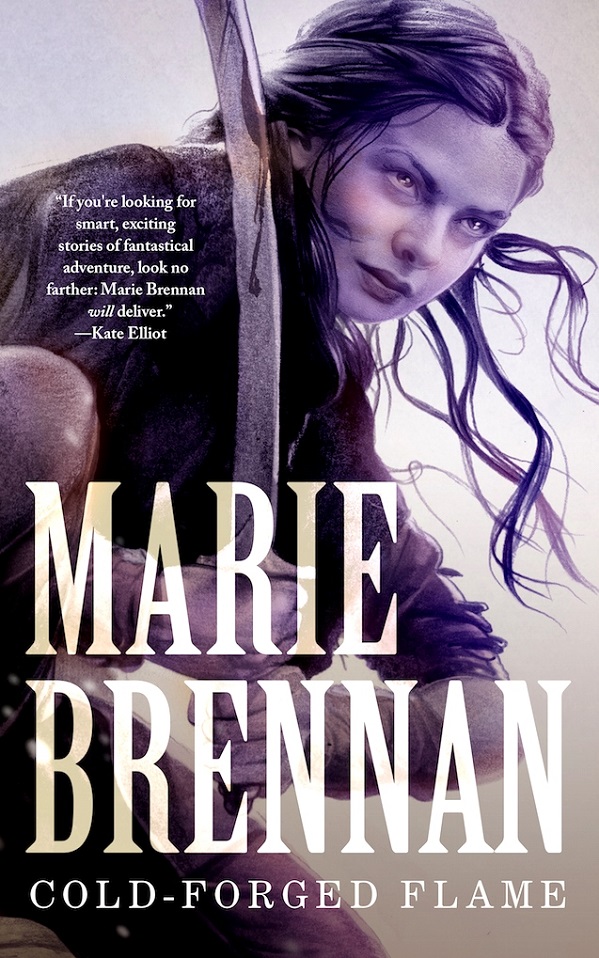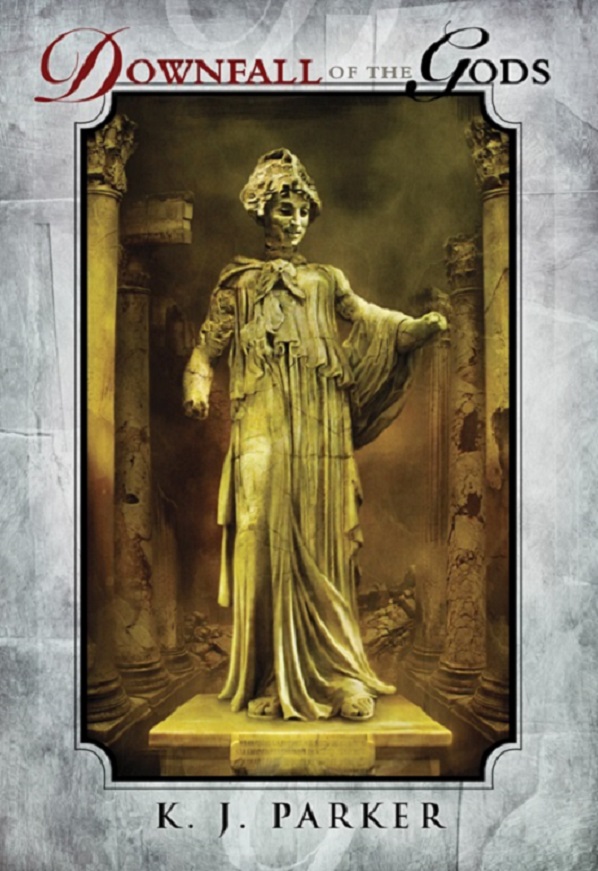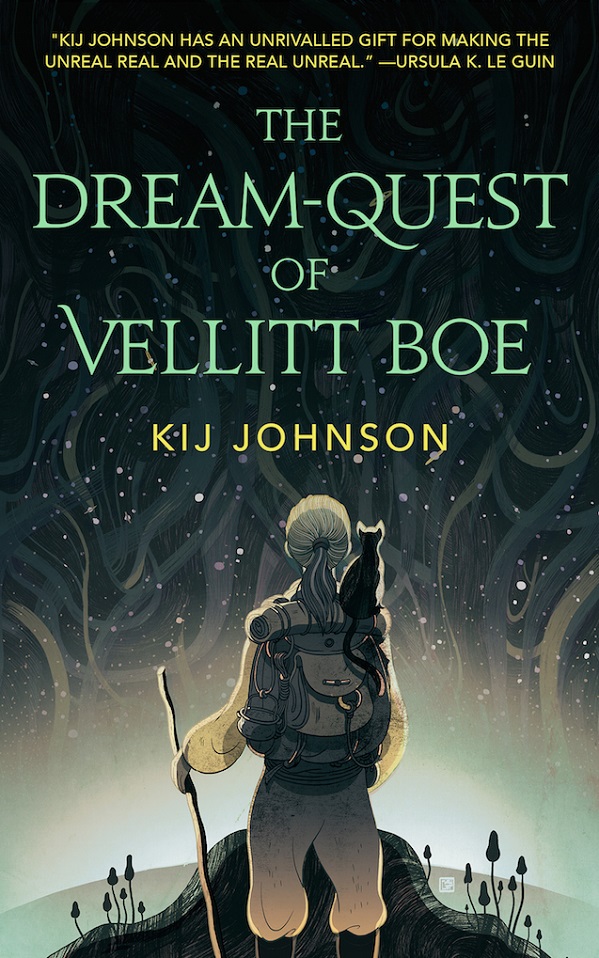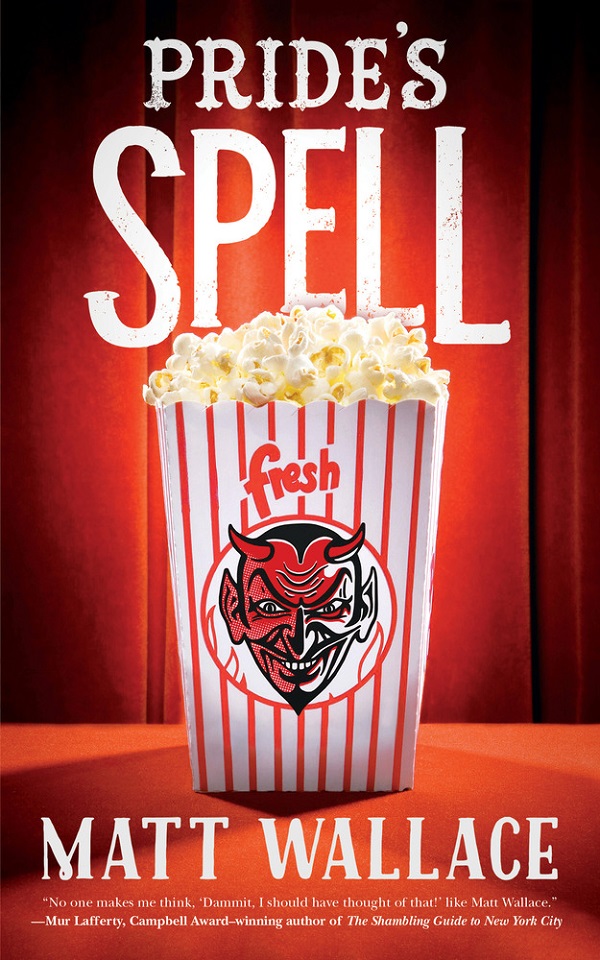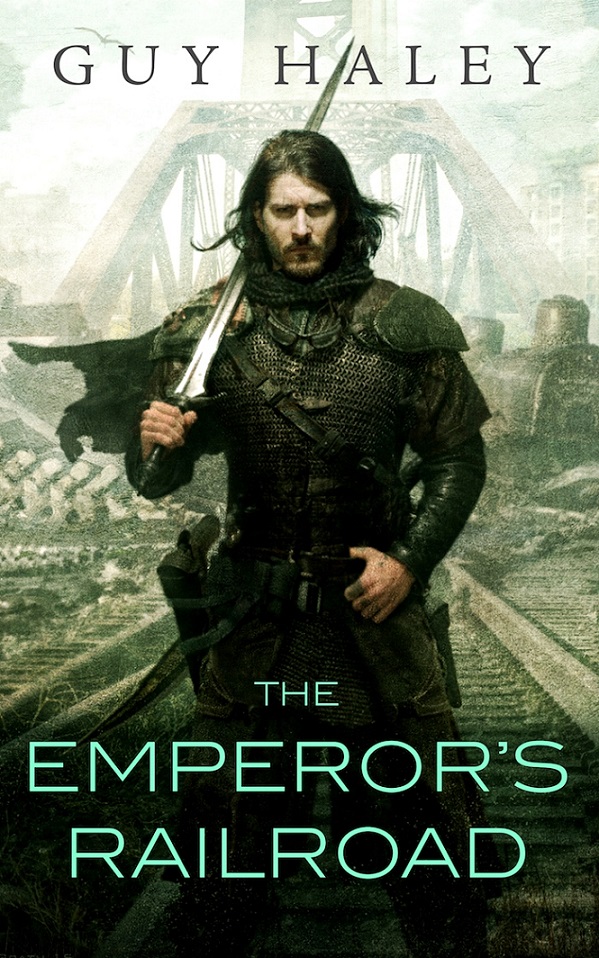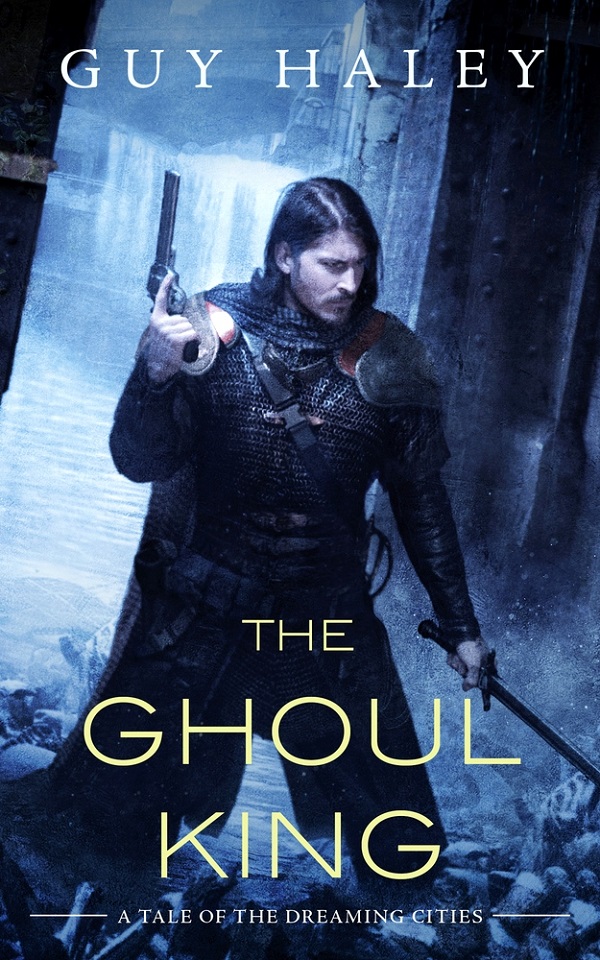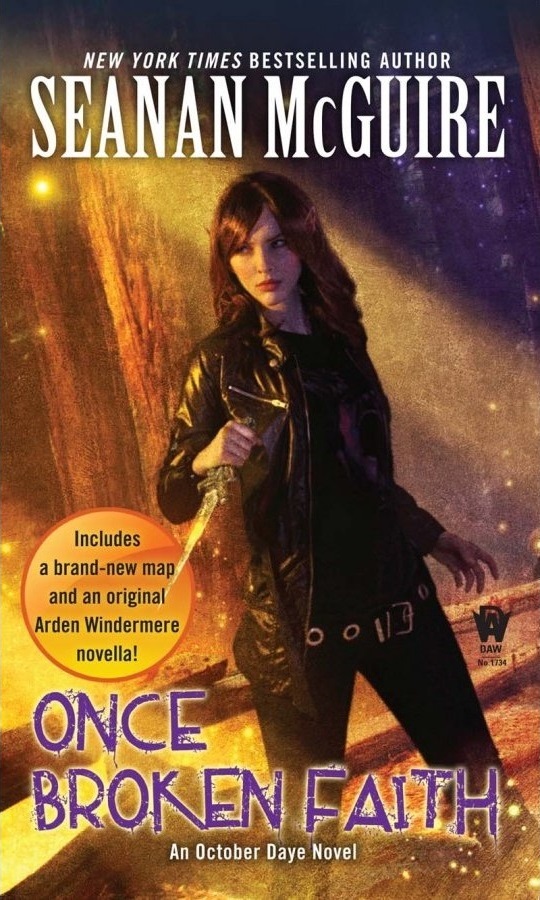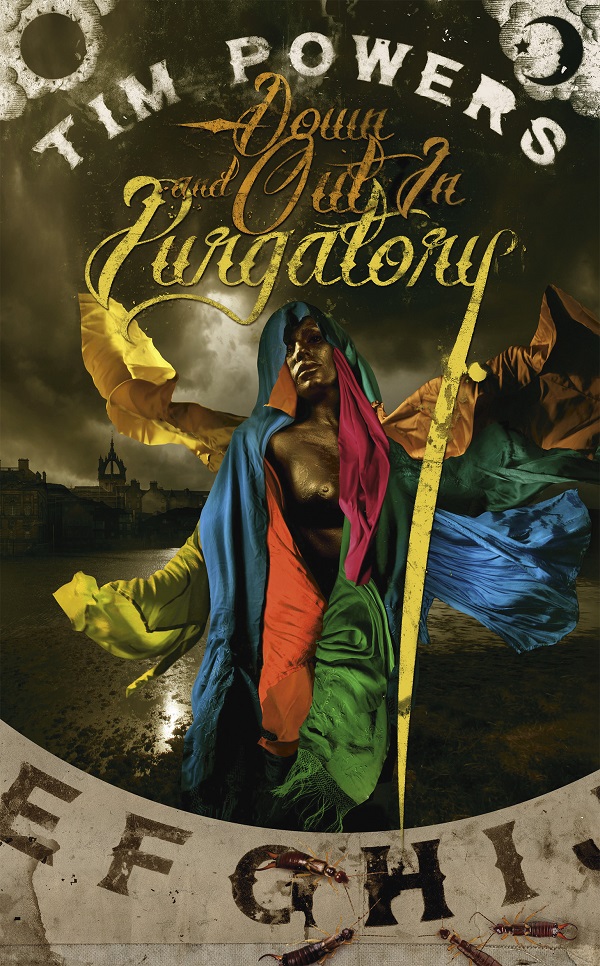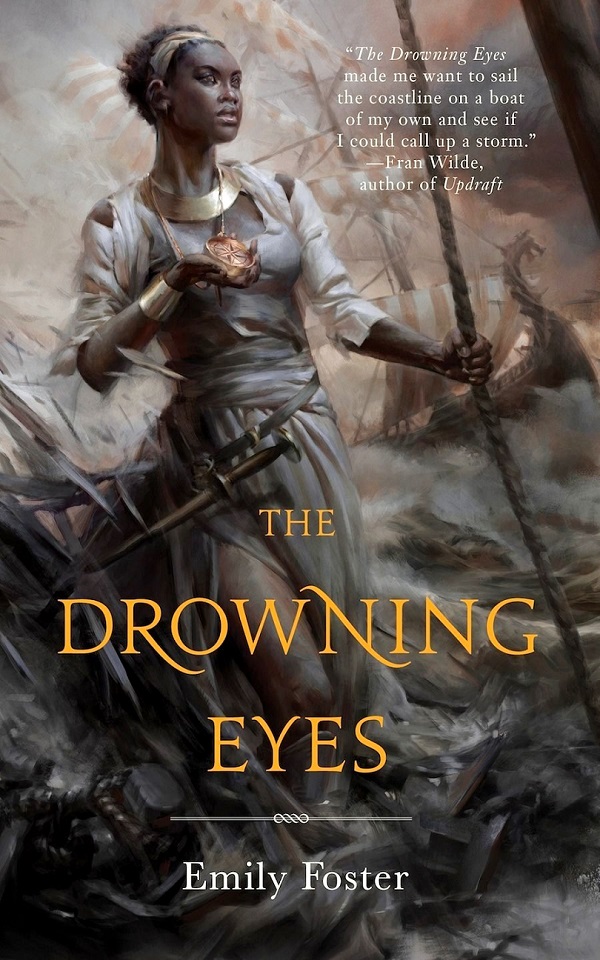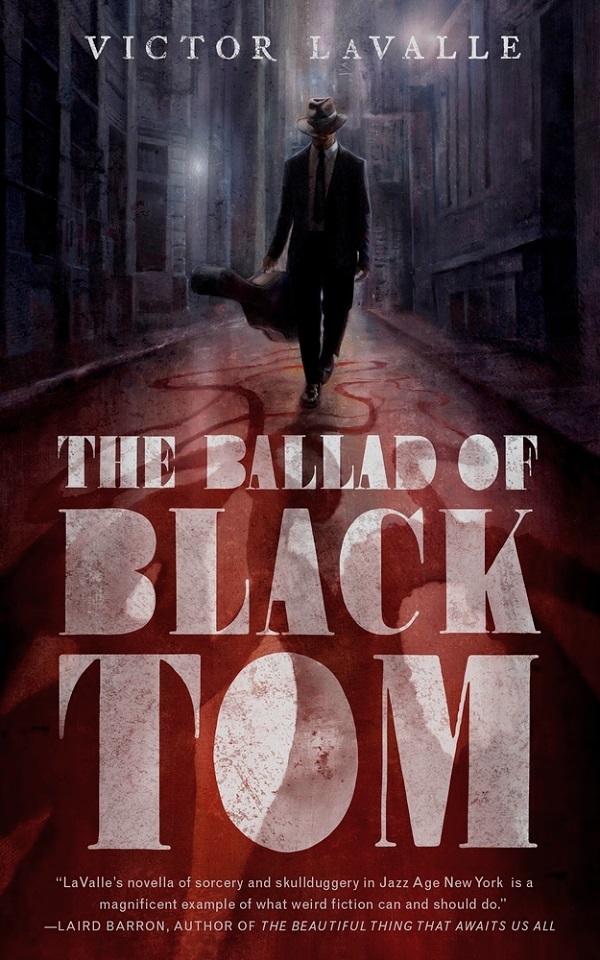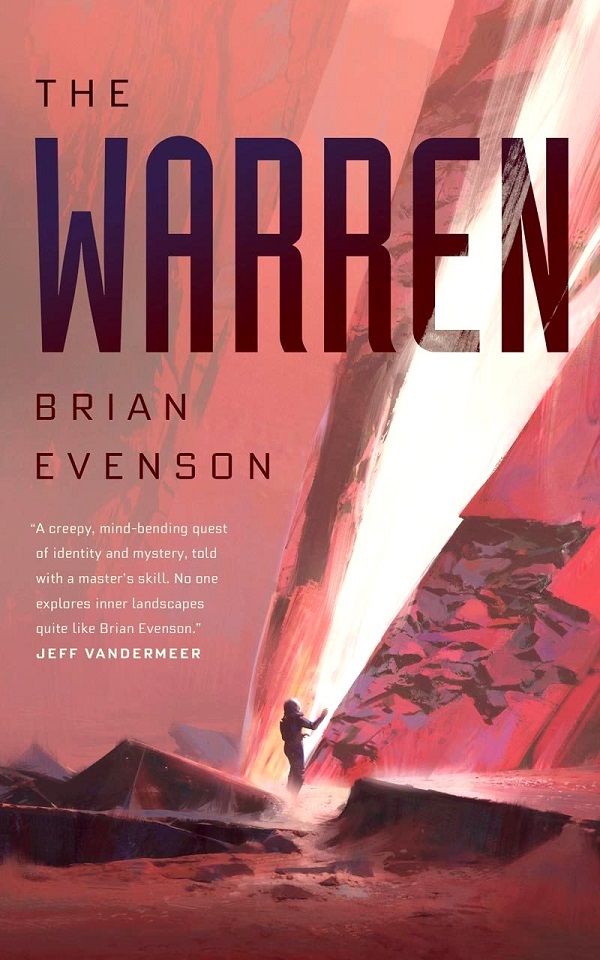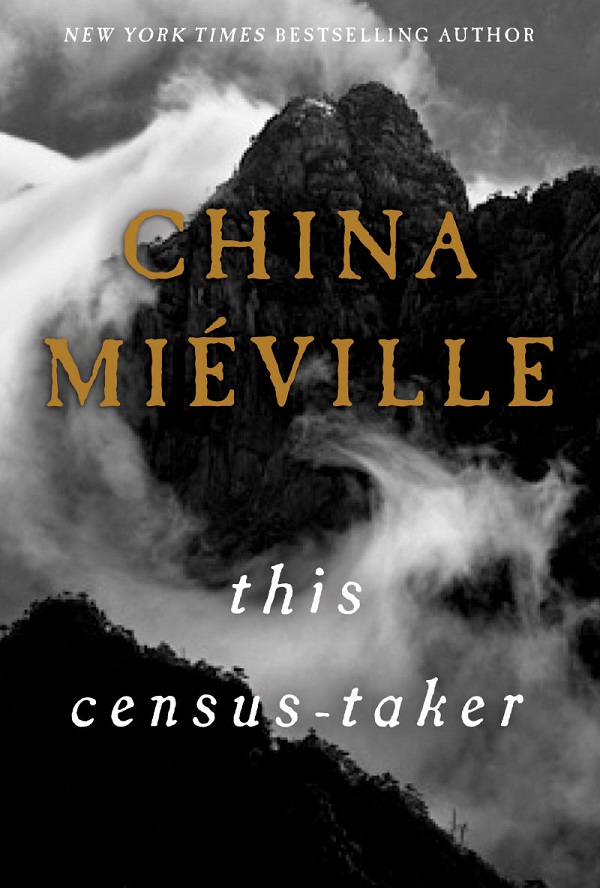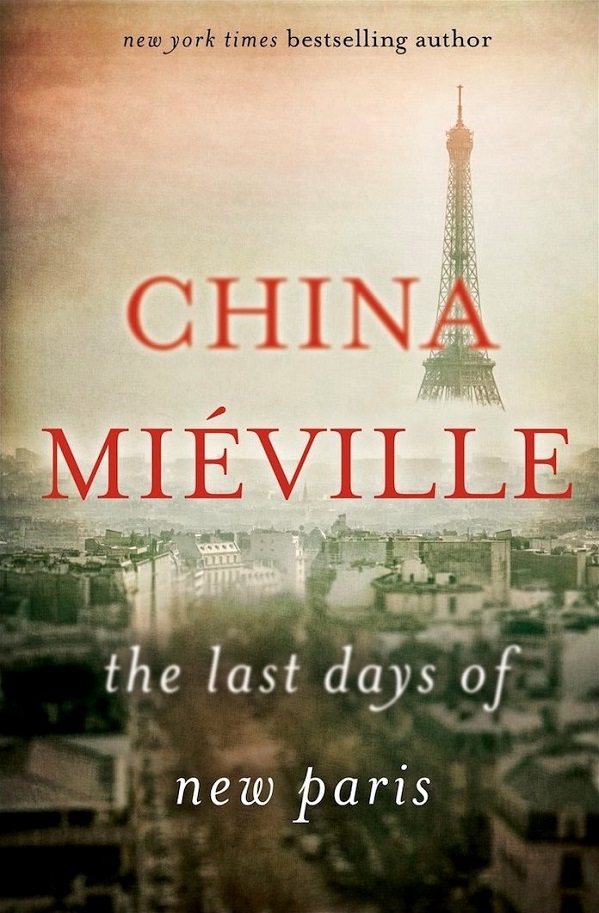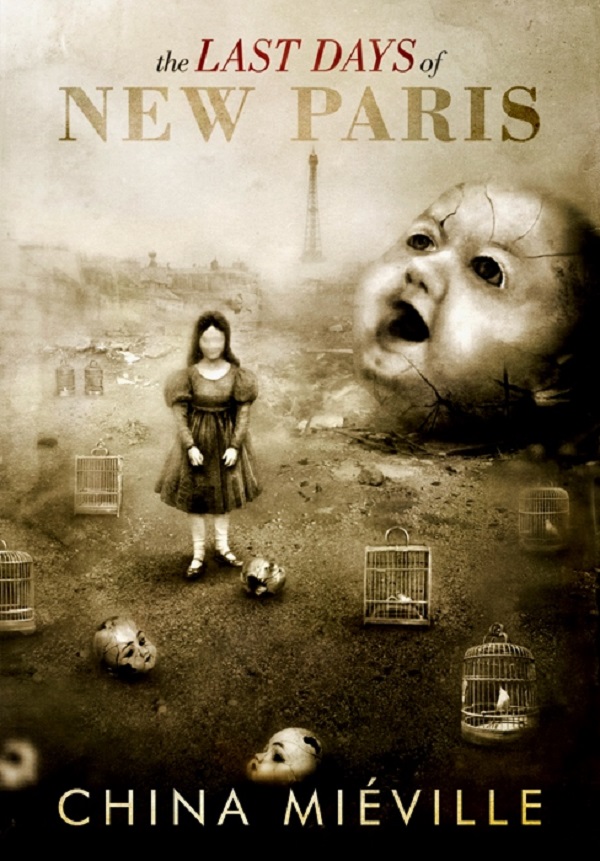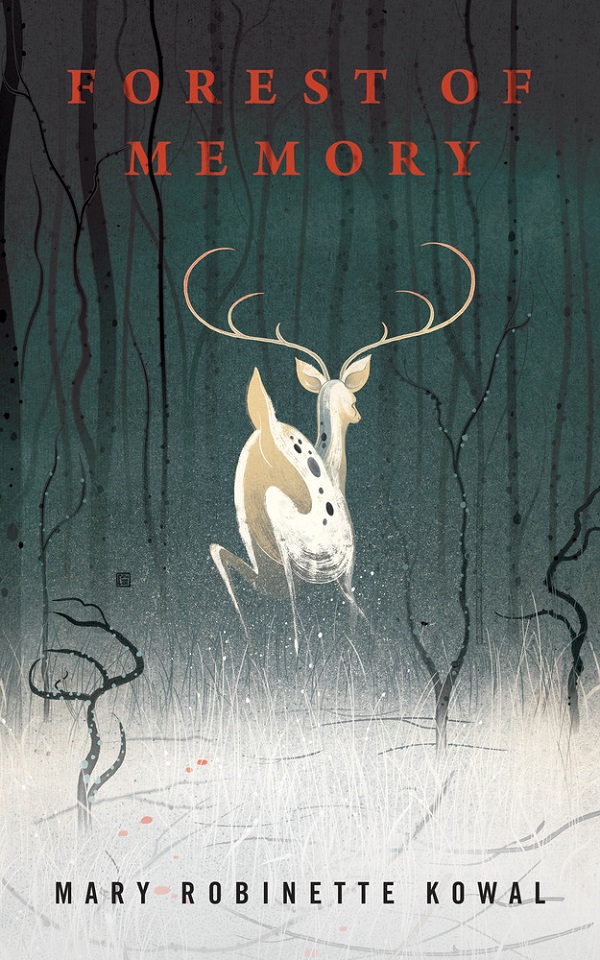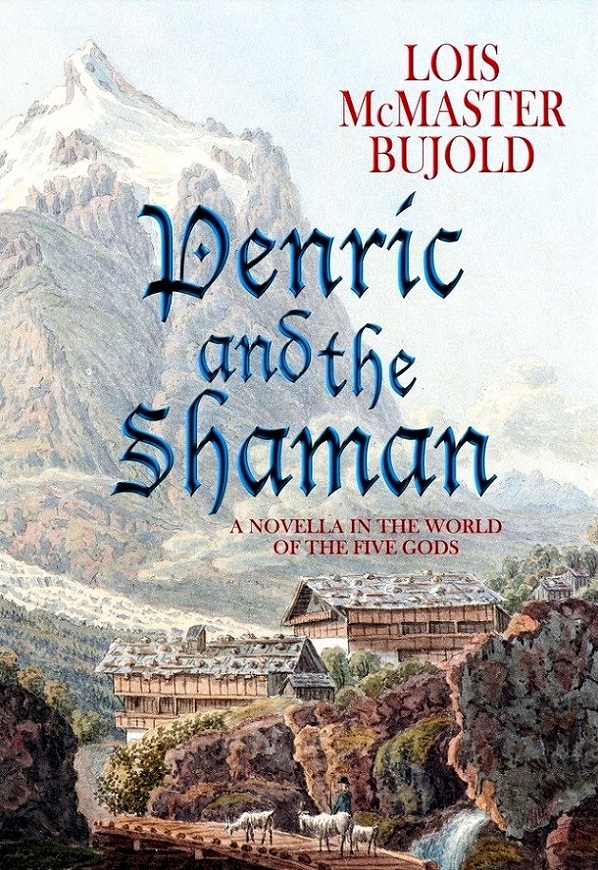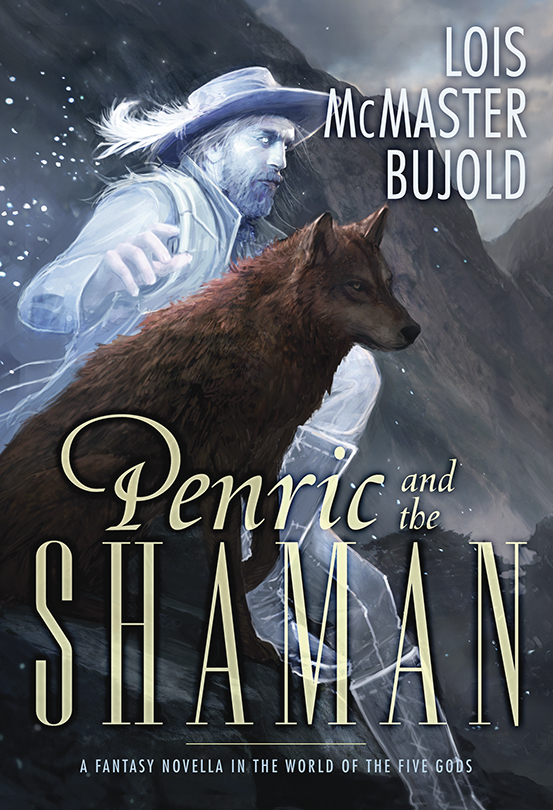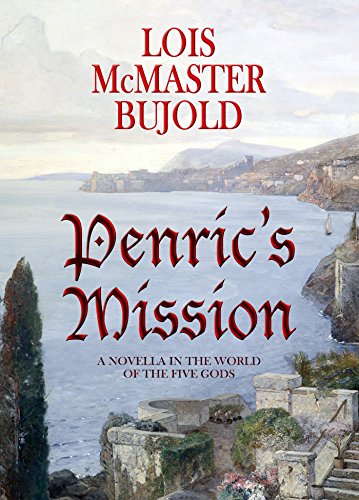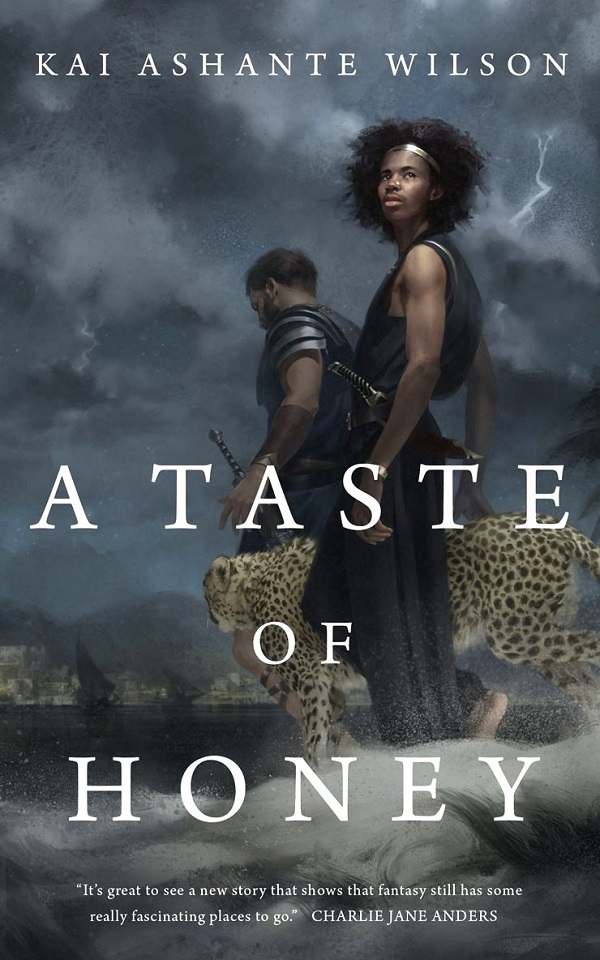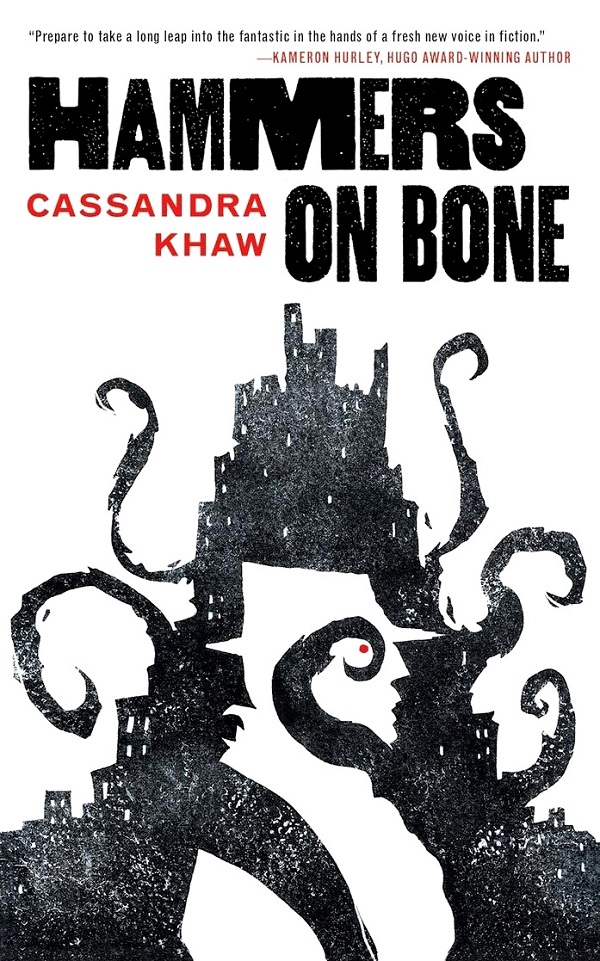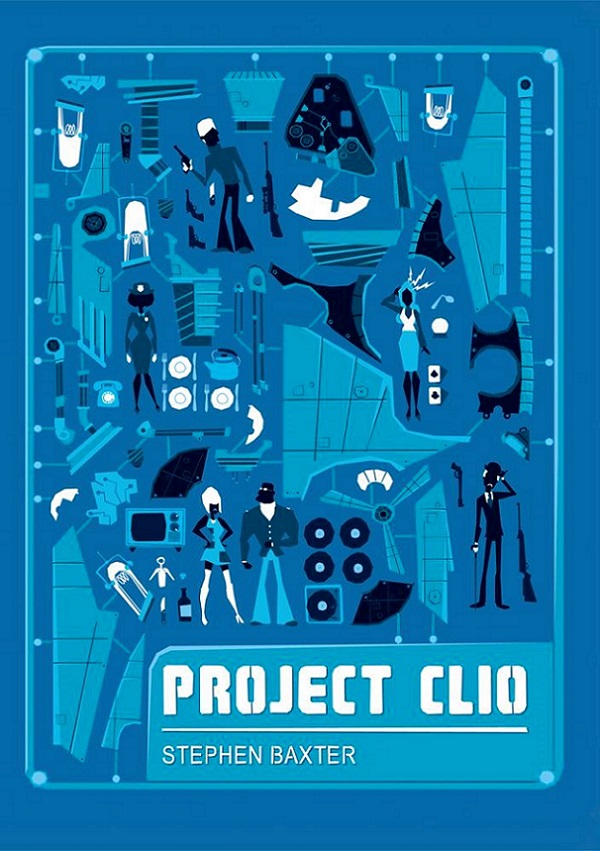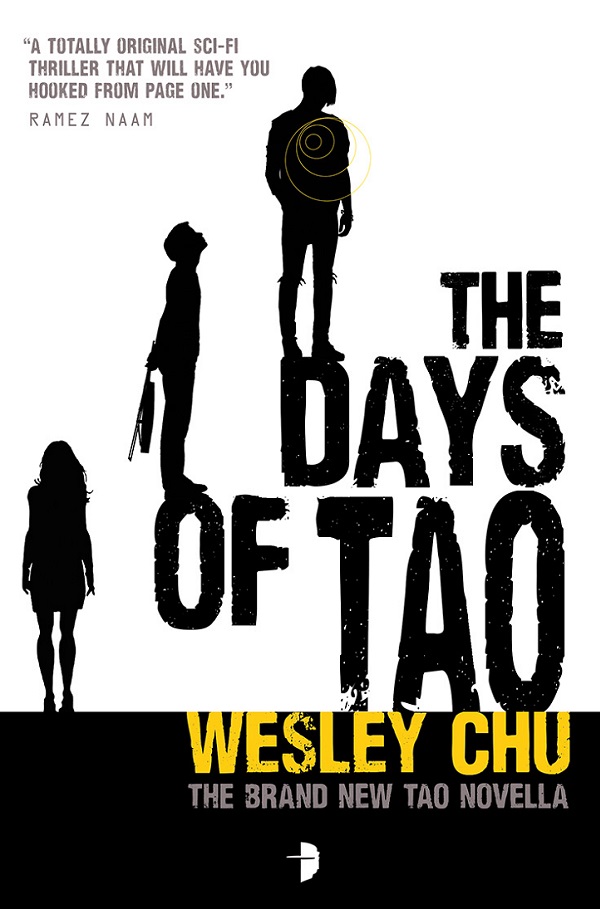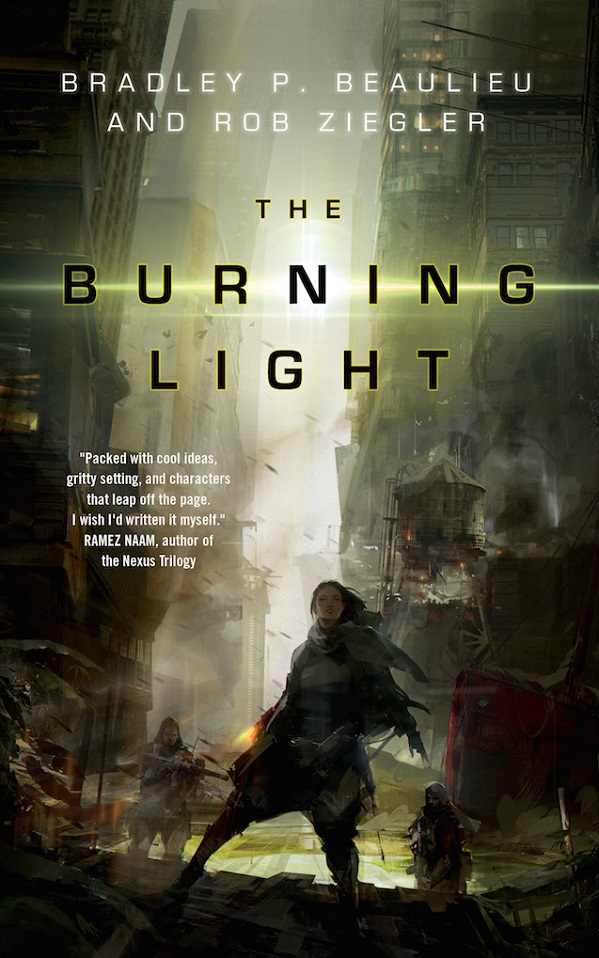(1) BRAM STOKER LOSERS UNITE. Scott Edelman has famously lost many Bram Stoker Awards – and he has the card to prove it. He invites tonight’s unlucky nominees to become card-carrying members of this group.
Tonight’s Bram Stoker awards ceremony means — there will be winners — but also losers. If any of the new Never Winner losers created tonight would like this Susan Lucci of the HWA to mail you one of my “It is an honor to be nominated” cards — ask, and one will be sent your way!
However — if you’re a previous Never Winner in Denver tonight who already owns of one of these cards and should lose yet again — please track down Lee Murray, whom I have deputized to punch you a new hole. Good … luck?
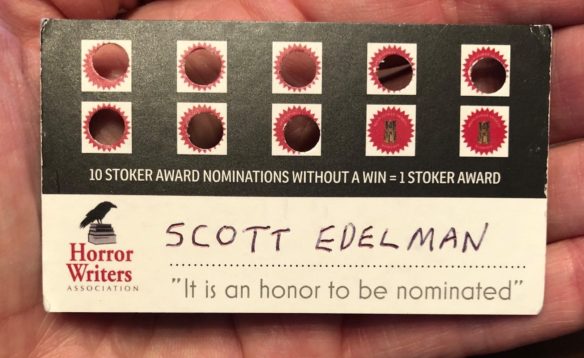
(2) LIVE LONG ENOUGH, YOU’LL PROSPER. Somtow Sucharitkul tells Facebook readers why a recent Star Trek episode rang a bell. BEWARE SPOILERS.
SPOILER COMING – But For What Exactly?
The Enterprise discovers that a comet is hurtling toward a planet that doesn’t have warp drive and whose civilization they cannot interfere with because of the prime directive. Presently, they discover that the comet is alive, and has some kind of intelligence. The only way to save the planet is to find a way to communicate with the comet, and it turns out that the key is to sing to it a folk song from someone’s homeworld….
Yes, this is the plot of the new episode of Star Trek: Strange New Worlds, but it’s also the plot of my 2001 Star Trek Novel, “Do Comets Dream?” which is itself vaguely adapted from a tale told in my Inquestor series, “The Comet That Cried for Its Mother”, originally published in AMAZING….
(3) IT’S A MASSACRE. “Everything on Broadcast TV Just Got Canceled” Vanity Fair declared yesterday. It will feel like that if you watched sff on CW.
In the ever-changing television landscape, this past Thursday was a particularly tough time to be a broadcast television show. Per TV Guide, 17 broadcast television shows were officially given the axe by their respective networks yesterday. “It’s the Red Wedding at WBTV/CW today,” tweeted showrunner Julie Plec, whose CW shows Legacies and Roswell, New Mexico were both among the carnage. “Much more to say, but not today. Loads of gratitude coming for fans and cast and crew in future tweets. But today, we mourn.”
The CW was hit particularly hard, with nine shows getting chopped in all. Along with Legacies and Roswell, New Mexico, the teen-focused network said goodbye to Dynasty after five seasons, In The Dark after four seasons, and Batwoman after three seasons. The network is currently up for sale, which may explain why it was particularly ruthless with its cancellations and downsizing its slate from 19 original scripted series to 11 original scripted series ahead of next fall….
(4) WHAT’S IT ALL ABOUT, ALFIE? James Wallace Harris reprints and analyzes Alfred Bester’s vintage analysis of the genre in “Blows Against The Empire: Alfred Bester’s 1953 Critique of Science Fiction” at Classics of Science Fiction (a 2020 post).
…Bester is looking back over what many have called the Golden Age of Science Fiction and burning it down with his blaster. I wish I could find the fan reaction to this essay from back in the 1950s, but Google only returns seven results. And for those who aren’t familiar with the name Alfred Bester, he wrote two books in the 1950s that became classics: The Stars My Destination and The Demolished Man. At the time Bester had a reputation for being a writing stylist and innovator. So getting a dressing down from one of our own must have been painful.
I wonder what I would have thought if I read and understood this essay in 1962 when I first began reading science fiction. Science fiction wasn’t popular then like it is today. Science fiction was one step up from comic books, and you were called retarded (their word back then) by your peers if you read comics. I remembered also being called a geek and zero for reading SF. Back then those terms were the social kiss of death. I had two buddies that read science fiction in high school and I remember being very hurt by George’s mother when she sat is down one day and gave us a serious talk about evils of reading science fiction. George’s mother was a sophisticated, well-educated, widely traveled woman, and I was always impressed with her thoughts, so it really hurt when she tried to convince us we were reading trash. She implied reading SF was a sign we were emotionally and intellectually immature. We thought we were Slans…
(5) OPPOSING BOOK BANS. “More than 25 Organizations Join ALA’s ‘Unite Against Book Bans’ Campaign”. Among them are the Authors Guild and Comic Book Legal Defense Fund.
The American Library Association this week announced that more than 25 major organizations, including a host of publishers and author and bookseller groups, have joined its Unite Against Book Bans campaign, an effort to help communities defend the freedom to read. The ALA launched the campaign in April to raise awareness about the surge in book bans and other legislation targeting the work of schools and libraries, with support from the Steve and Loree Potash Family Foundation and the William and Flora Hewlett Foundation.
“Our partners and supporters are critical in moving the needle to ultimately bring an end to book bans,” said Deborah Caldwell-Stone, director of the ALA’s Office for Intellectual Freedom. “It’s time that policymakers understand the severity of this issue. ALA is taking the steps necessary to protect individuals’ access to information, but we can’t do this alone.”…
“Three-quarters of the 1,100 plus books currently banned in public schools in the United States have been written by authors of color, LGBTQ authors, or other traditionally marginalized voices,” said Authors Guild CEO Mary Rasenberger, in a statement.

(6) NAMING CONVENTIONS. He has a point –
(7) PERSONAL TAXONOMY. Joe Vasicek, often quoted here in the Sad Puppy days of 2015, shares what he calls “an interesting personal discovery” at One Thousand And One Parsecs.
…I just made a very interesting personal discovery, gleaned from the data on my reading of the Hugo and Nebula winning books. Of the 110 novels that have won either award, I have now read all but 16 of them, which is enough data to get some representative results.
One of the best predictors that I will DNF a book is whether the author is a childless woman. Of the 18 books written by childless women, I have DNFed all but three of them (Downbelow Station by C.J. Cherryh, which I read years ago and would probably DNF today, and Network Effect by Martha Wells, which is a genuinely entertaining read, and Jonathan Strange & Mr. Norell by Susanna Clarke, which I haven’t read yet). For childless men, it’s a little bit more of a crapshoot: of the 31 books written by childless men, I’ve DNFed 16 of them and read 11, but only 6 of those are books I thought were worth owning.
Conversely, one of the best predictors that I will enjoy a book is whether the author is a mother. Of the 20 books written by mothers, I have DNFed only 6 of them and read 8, all of which I think are worth owning. Of the six remaining books that I haven’t read yet, I will almost certainly finish four of them, and may finish all six. The only book by an author I haven’t already read and enjoyed is The Speed of Dark by Elizabeth Moon, which I am currently reading and will probably finish next week…
(8) LIGHT MY FIRE. “Firestarter (2022) vs. Firestarter (1984): Which Stephen King adaptation burns brightest?” – Clark Collis supplies his answer at Entertainment Weekly. The summaries of each film make good reading, too.
… The 1984 film stars Barrymore as Charlie McGee, a young girl with pyrokinetic powers who is fleeing from a sinister government organization called “The Shop” with her father Andy, played by David Keith. Andy has been training Charlie to use her powers properly by getting her to turn bread into toast with her mind but it is the unfortunate Shop agents who get browned as Barrymore’s character periodically sets them ablaze. The supporting cast is notable for a few reasons. Oscar-winners Art Carney and Louise Fletcher play a couple who befriend Charlie and Andy, while Martin Sheen portrays the head of the Shop just a year after his performance in David Cronenberg’s adaptation of King’s The Dead Zone. Finally, another Academy Award-winner, George C. Scott, is inexplicably cast as the seemingly First Nation assassin John Rainbird, who has a fondness for punching his targets’ noses into their brains and an unhealthy interest in our heroine…
(9) TOM SWIFT. Edge Media Network supplies an intro as “First Trailer Drops for New CW Series ‘Tom Swift’ Featuring a Black Gay Lead Character”.
…”Tian Richards already made his debut as Tom Swift on one of the best episodes of ‘Nancy Drew’ yet, but get ready to see him in a whole new light on his own show,” EW said.
As previously reported at EDGE, being gay was a prominent part of the character’s depiction when he made a guest appearance on “Nancy Drew.” Sparks flew between Tom Swift and “Nancy Drew” regular character Nick (Tunji Kasim), leading to an onscreen kiss….
(10) WHEN I USE A WORD. At Tor.com, CD Covington’s series on sff linguistics finally tackles the 500-lb gorilla: “On Tolkien, Translation, Linguistics, and the Languages of Middle-earth”.
Since I started this column in 2019, I’ve been avoiding one famous—possibly even the most famous—example of using linguistics in SFF literature: the work of J.R.R. Tolkien. It’s not because I don’t like Lord of the Rings—quite the opposite, in fact. It’s just such an obvious topic, and one which people have devoted decades of scholarship to exploring. Hell, my Old English prof has published academic scholarship on the topic, in addition to teaching a Maymester class on the languages of Middle-earth. But I suppose it’s time to dedicate a column to the book that first made me think language was cool and to the man who wrote it.
(11) MEDIA BIRTHDAY.
2010 – [By Cat Eldridge.] I’m starting this essay by acknowledging that everyone has their favorite Robin Hood. My all-time favorite is the one in the Robin of Sherwood series, Robin of Loxley as played by Michael Praed. And yes, I acknowledge that the second Robin, Robert of Huntingdon as performed by Jason Connery was quite excellent too. Richard Carpenter did himself proud with this series.
But I’m here tonight to talk about one of my favorite Robin Hood films (the other being Robin and Marian.) Ridley Scott’s Robin Hood premiered in the States on this date twelve years ago. It was written by Brian Helgeland who had done mostly horror films before this but was also the screenwriter of the beloved A Knight’s Tale. He along with Ethan Reiff and Cyrus Voris were responsible for the story.
It was produced by Ridley Scott, Brian Grazer and Russell Crowe. Yes the actor who played Robin Hood here helped produce it. So let’s turn to casting.
I think Crowe made an outstanding Robin Longstride and Cate Blanchett as Marion Loxley was a great casting move. Other interesting casting here includes Max von Sydow as Sir Walter Loxley and William Hurt as William Marshal. This was not a cast of unknowns. I thought Matthew Macfadyen as the Sheriff of Nottingham was interesting as the actor usually had much lighter roles. Mark Addy as Friar Tuck was well cast.
It was a very expensive undertaking costing at least two hundred million and it took in least three hundred and twenty-five million, so it likely just broke even.
And what was the opinion of critics at the time? Well it was decidedly mixed with Deborah Ross of UK’s Spectator on the side of the dissenters: “Scott decided, I think, to get away from the whole campy thing in tights business and wanted to make this ‘real’. So there is sweat and dirt and rats at the cheese and even bad teeth, which is fair enough, but it is also joyless.”
But Richard Klein of Shadows on the Wall liked it: “Ridley Scott and his usual Oscar-winning crewmates turn the familiar old English legend it into a robust, thumping epic. The pacing is a bit uneven, but it keeps us thoroughly engaged.”
Let’s finish off with Jeffrey Westhoff of the Northwest Herald: “Robin Hood doesn’t become the swashbuckling bandit of Sherwood until the final moments, when the tag “And so the legend begins” appears. You may walk away liking this Robin Hood well enough, but wishing you had seen the sequel.”
It gets just a fifty eight percent rating among audience reviewers at Rotten Tomatoes.

(12) TODAY’S BIRTHDAYS.
[Compiled by Cat Eldridge.]
- Born May 14, 1929 — Kay Elliot. The actress who shows up in “I, Mudd” as the android form of Harry Mudd’s wife Stella Mudd. SPOILER ALERT (I promised our OGH I’d put these in. It’s possible someone here hasn’t seen “I, Mudd”.) Need I say she ends getting the upper hand in the end? She also had appearences in The Man from U.N.C.L.E. as Miss Prendergast in “The It’s All Greek to Me Affair” episode and multiple roles on Bewitched. That’s it, but she died young. (Died 1982.)
- Born May 14, 1933 — Siân Phillips, 89. Reverend Mother Gaius Helen Mohiam in David Lynch’s Dune, Cassiopeia in Clash of The Titans, Grandmother in A Christmas Carol, Charal in Ewoks: The Battle for Endor, and The Red Queen in Alice Through the Looking Glass. And I’m about to see her on Silent Witness.
- Born May 14, 1935 — Peter J. Reed. A Vonnegut specialist with a long track history starting with Kurt Vonnegut, Jr.; The Vonnegut Chronicles: Interviews and Essays that he wrote with Marc Leeds; Kurt Vonnegut: Images and Representations again with Leeds again. He also wrote a handful of essays such as “Hurting ’til It Laughs: The Painful-Comic Science Fiction Stories of Kurt Vonnegut” and “Kurt Vonnegut’s Bitter Fool: Kilgore Trout”. (Died 2018.)
- Born May 14, 1944 — George Lucas, 78. For better and worse, he created the Star Wars and Indiana Jones franchises. Raiders of the Lost Ark and Indiana Jones and the Last Crusade are fine, the others suck royally in my opinion. Later Star Wars films are meh though I adore the original trilogy. And let’s not forget THX 1138. So you ask, what are my favorite works that he was involved in? Labyrinth, Raiders of the Lost Ark, The Empire Strikes Back and Willow. Yes Willow. Oh, and The Young Indiana Jones series which I really, really loved.
- Born May 14, 1945 — Francesca Annis, 77. Lady Jessica in David Lynch’s Dune, Lady Macbeth in Roman Polanski’s Macbeth. I know only two roles, but what a pair of roles they were! She also appeared in Krull as The Widow of The Web but I’ll be damned if I can remember her in that role.
- Born May 14, 1952 — Kathleen Ann Goonan. Her Nanotech Quartet is most excellent, particularly the first novel, Queen City Jazz. Her only Award was given for In War Times which garnered a John W. Campbell Memorial Award. She’s wrote an interesting essay on the relationship between sf and music, “Science Fiction and All That Jazz”. (Died 2021.)
- Born May 14, 1952 — Robert Zemeckis, 70. He’s responsible for some of my favorite films including the Back to the Future trilogy, The Muppet Christmas Carol, The Witches, Who Framed Roger Rabbit and the savagely funny in a twisted sort of way Death Becomes Her. So what’s your favorite films that’s he had a hand in?
- Born May 14, 1955 — Rob Tapert, 67. I’d say he’s best known for co-creating Xena: Warrior Princess. He also produced and/or wrote several other television series including Hercules: The Legendary Journeys, M.A.N.T.I.S. and American Gothic. Tapert also co-created the prequel series Young Hercules which I loved. He’s married to actress Lucy Lawless.
(13) COMICS SECTION.
- Let Nick Mamatas introduce Tom Gauld’s strip for today’s Guardian.
- Next, here’s Gauld’s latest comic for New Scientist.
(14) CLUES OF THE DAY. [Item by Martin Morse Wooster.] Keith Roysdon remembers newspaper crime comic strips (remember Steve Roper and Mike Nomad?) “Black and White and Noir All Over: A Brief History of Vintage Newspaper Crime Comic Strips” at CrimeReads.
Who could have known that newspaper comic strips and crime stories, including noir, were a match made in heaven?
Newspaper comic strips are an artistic genre that’s largely forgotten now. The strips that remain are for the most part humor strips like “Garfield.” A handful of dramatic strips are still published.
But serial dramatic strips were once a staple of the newspaper comics page. Many of them were soap opera-ish strips like “Mary Worth” and “Apartment 3-G.” To say that drama strips were slow moving is an understatement. I wish I could remember who joked that they came back to read “Apartment 3-G” after decades away and the caption read, “Later that afternoon …”
But that deliberate pace – well, maybe not quite that deliberate – was perfect for teasing out a good crime storyline. And crime and noir look awesome in black and white newsprint.
(15) MUSIC WITHOUT THE SPHERES. “Peace is Still Weirder Than War” asserts Laurie Penny in a very entertaining essay about Eurovision. Admittedly, nothing to do with sff except a brief reference to Catherynne M. Valente’s Space Opera at the end.
…Britain is a lot worse at Eurovision than you’d think. We’ve spent half a century distracting the world from our post imperial decline by flinging out wild handfuls of pop music and self deprecating humour, so we really ought to be able to deploy them here. Sadly, we’re scuppered every time by our even more fundamental fear of looking daft in front of the French.
We’ve made worse choices for the same reason.
But reasons are not excuses, and the land of Monty Python, David Bowie and the Bonzo Dog Doo-Dah Band should be able to do better than another basic bearded guitar boy. We do have the best tv commentary by miles, after Graham Norton seamlessly accepted the baton from the great Terry Wogan, proving once again that Britain’s comfort zone is making fun of other people. Yes. Hi.
…For related reasons, Ukraine are likely to win this year. Russia can sulk all they like, just like they did when Ukraine stood down from Eurovision in 2015with the reasonable excuse that they were busy being invaded by Russia. in 2016, Ukraine was back, and it won, narrowly beating Russia, whose entry looked like someone repurposed a rave club as a re-education camp without redecorating. Not only did Ukraine win, it won with a song called ‘1944’, about the Soviet genocide of the Crimean Tartars. Russia has not forgotten this. State Television spent a long time denouncing Eurovision as a degenerate spectacle of homosexuality, which did as much good as denouncing bears for defecating in the woods.
But Russia has never really been any good at Eurovision. This year they’re not even going, partly because the Kremlin has no interest in any competition it can’t cheat at, but mostly because they got banned. It’s hard to get banned from Eurovision, but invading a neighboring country and massacring tens of thousands of people will do the trick….
(16) STOP, NOW, WHAT’S THAT SOUND? ScreenRant suggests “10 ‘Subtly’ Scary Horror Movies (For Horror Fans Sick Of Jump Scares)”. A Bradbury adaptation leads the list!
Sometimes the unknown or the unnatural can be much more terrifying than any masked slasher with a chainsaw.
….It’s not so much that these films rely on someone hiding in the shadows and yelling boo, but rather the audience knows something is wrong but can’t identify what. While jump scares and other such tactics might be sparsely employed, the real horror in these movies comes from both knowing and not knowing what might be in store.
Something Wicked This Way Comes (1983)
Sometimes, the scariest movies are the ones where nobody dies, and Disney’s Something Wicked This Way Comes is a brilliant example. Based on the book by Ray Bradbury, the film tells the story of what happens when a mysterious carnival lurks into town one windy October.
Led by the mysterious Mr. Dark, Cooger and Dark’s Shadow Show has the uncanny ability to grant anyone’s wishes and make their dreams come true. But like with most things Disney, all magic comes at a price. When two boys and the local librarian are able to see through the illusions, a slow-burning battle with the freakshow for the souls of the town takes place.
(17) THE HUNDREDTH SHADE. Paul Weimer reviews “Gregory A. Wilson’s Grayshade” at A Green Man Review.
… We meet Grayshade in the midst of an assassination that doesn’t go quite to plan, and a relatively atypical assassination target at that – the outwardly flighty socialite wife of a political powerful man, which in itself seems odd to Grayshade. We come to Grayshade at a point in his career where he is extremely experienced and very good at what he does. This is no “coming of age” novel where we follow the assassin through his first mission; rather this is someone who has past adventures and missions behind him, which grounds him for when things do not go according to his expectations. Things spiral out from the assassination not going right, to the point where Grayshade starts to question his purpose, his role, and the entire Order.
This makes a lot of the novel about information control and dissemination, which in turn reminds me of Wilson’s gamemastering….
(18) BAD BACK TO THE FUTURE. At Galactic Journey, Jessica Holmes gives us an recap of the latest (in 1967!) episode of Doctor Who. “[May 14, 1967] Ben And Polly To The Departure Gate (Doctor Who: The Faceless Ones [Part 2])”.
…We left things off with the Doctor having a sudden attack of a bad back, and things only get worse, with Spencer disabling Jamie and Samantha within moments of the episode’s opening.
Now would be a good time to finish them off, you’d think, but instead he sets up some sort of death ray to kill them… eventually. The thing moves so slowly the trio would probably have time for a round of golf before the ray fries them. Though mostly paralysed, Samantha conveniently has enough control of her faculties to get her mirror from her bag and hand it to Jamie, who uses it to reflect the beam and blow up the death ray machine.
With the machine destroyed, their partial paralysis wears off, which doesn’t make an awful lot of sense to me. I thought it was the freezing pen that paralysed them? And I’m still not sure what that device on the Doctor’s back did to him…
(19) AND YOU ARE THERE. This fossil is in a way a snapshot: “How the dinosaurs died: New evidence In PBS documentary” – the Washington Post digs into the story.
…The ground started shaking with intense vibrations while water in the nearby sea sloshed about in response. The sky filled with burning embers, which drifted down and set fire to the lush primordial forest.
Thescelosaurus panicked and looked to flee — but it was too late. Everything changed in a heartbeat as a 30-foot-high wave of mud and debris came racing up the seaway from the south, sweeping away life and limb in the process. The dinosaur was caught in the destructive deluge, its leg ripped off at the hip by the devastating surge.
That moment — 66 million years ago at the end of the Cretaceous period, when an earth-shattering asteroid ended the reign of the dinosaurs — is frozen in time today through a stunning fossil found last year at the Tanis dig site in North Dakota. This perfectly preserved leg clearly shows the skin, muscle and bones of the three-toed Thescelosaurus.
While the details of the death scenario described above are embellished, they’re based on remarkable new findings and accounts by Robert DePalma, lead paleontologist at Tanis.
“We’re never going to say with 100 percent certainty that this leg came from an animal that died on that day,” the scientist said. “The thing we can do is determine the likelihood that it died the day the meteor struck. When we look at the preservation of the leg and the skin around the articulated bones, we’re talking on the day of impact or right before. There was no advanced decay.”…
(20) DRAWN WITHOUT DRAWERS. CBR.com remembers: “Star Wars: Why George Lucas Had to Fight for Chewbacca Not to Wear Shorts”.
…So he wanted McQuarrie to go beyond humanoid and try to do more of an animal design for Chewbacca. Lucas’ recall led him to a recent issue of Analog Magazine, which had a short novel in it by a pre-Game of Thrones George R.R. Martin called “And Seven Times Never Kill a Man.” Artist John Schoenherr had designed some characters for Martin’s story and they made it to the cover of the magazine…
Lucas sent the drawings to McQuarrie and basically said, “Draw Chewbacca like that” and so that’s what McQuarrie did…
The problem with having basically a giant dog as a character is that dogs, well, you know, don’t have pants. McQuarrie kept coming up with some designs with the character in pants and Lucas kept saying no and that carried over to when the film started production. Lucas’ specific vision of what Chewbacca would look like required him to not have pants and that was a bit of a strange thing for the studio executives at the time.
During the DVD commentary for the 2004 release of Star Wars on DVD, Mark Hamill recalled what Lucas had to go through with regard to Chewbacca’s lack of clothes. “I remember the memos from 20th Century Fox. Can you put a pair of lederhosen on the Wookiee?’ All they could think of was, ‘This character has no pants on!’ This went back and forth. They did sketches of him in culottes and baggy shorts.”…
(21) BEING SNARKY. Would Lewis Carroll readers with an unassigned two hours or so available be interested in the opportunity to watch this complete production? “The Hunting of the Snark” posted by Official London Theatre.
[Thanks to Andrew Porter, Michael Toman, Cat Eldridge, Mike Kennedy, Martin Morse Wooster, JJ, John King Tarpinian, and for some of these stories. Title credit belongs to File 770 contributing editor of the day Soon Lee.]


